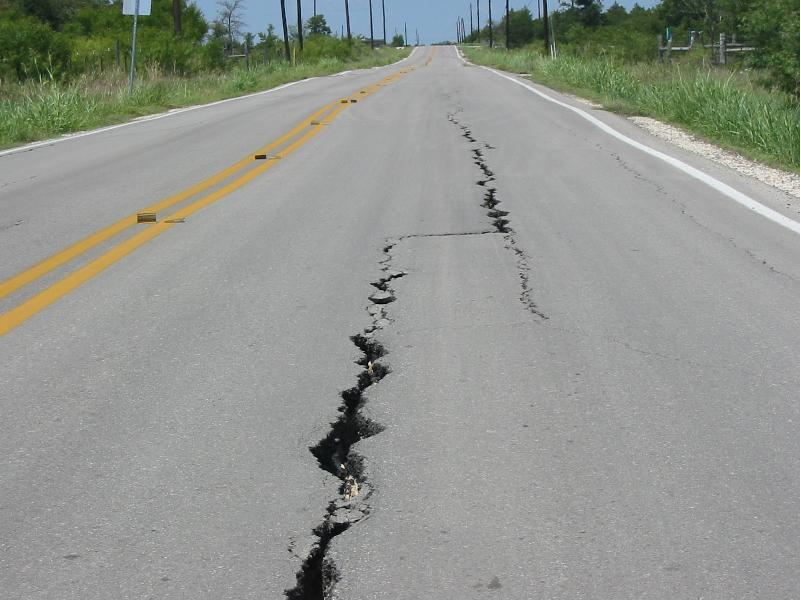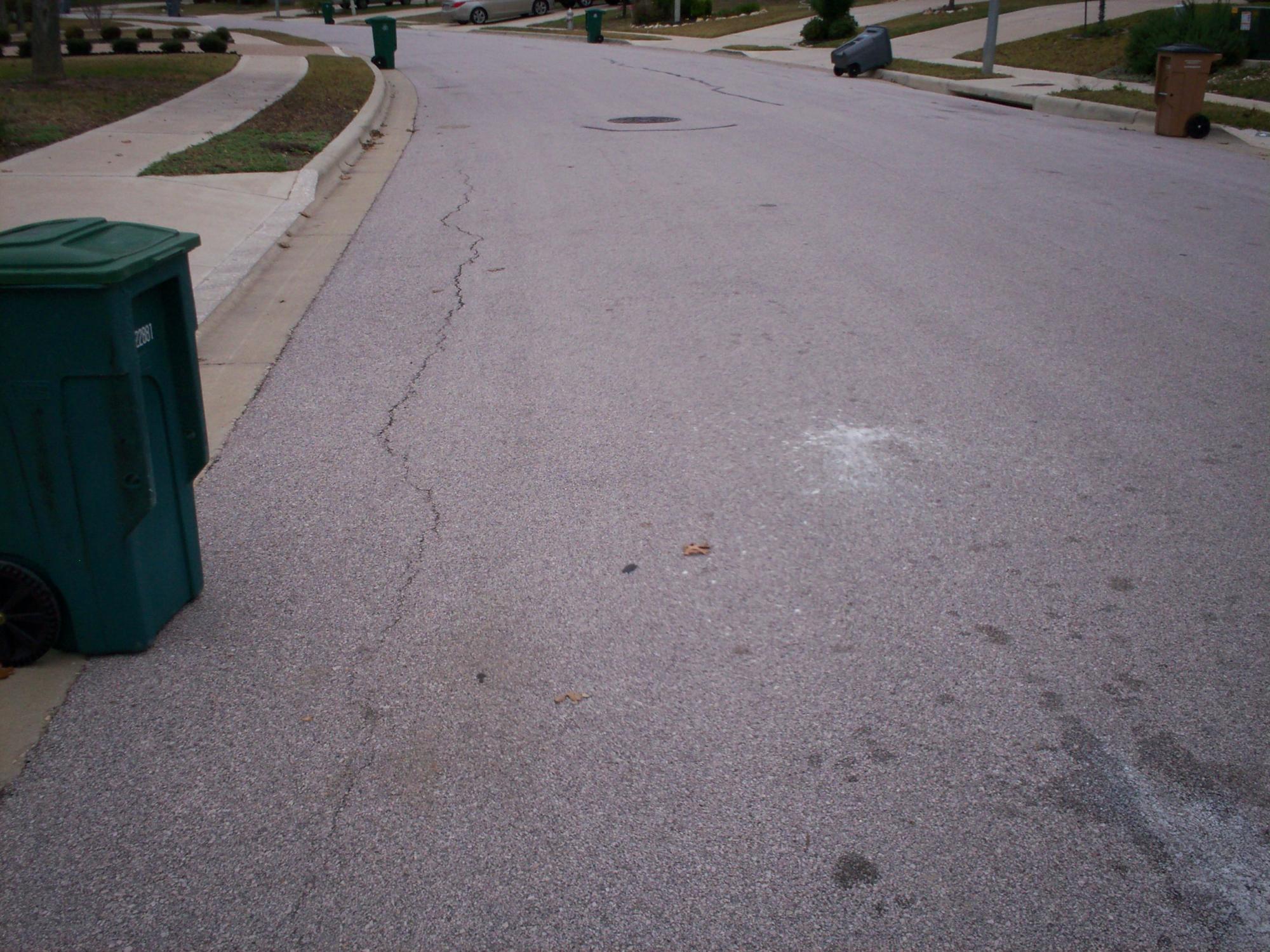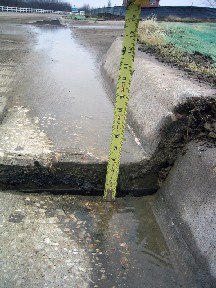Pavement Design and Performance
Pavement thickness design is performed by geotechnical engineers since they have the best knowledge of soil behavior and characteristics as related to pavement performance. An exception would be for highway design where some TxDOT engineers are qualified to design pavement sections.
The performance of a pavement section is affected by several elements:
- The pavement thickness design (this must include a proper characterization of the subgrade soils and proper recommendations for soil improvement if needed).
- The quality of the construction and materials used.
- The actual traffic load and truck load applied to the pavement (relative to design estimates or assumptions).
- The quality and frequency of the maintenance (roads rare not "build it and leave it" structures, they require maintenance and have limited life spans).
In addition, different owners have different attitudes and expectations about pavement performance (i.e. the tolerance for distress varies). Pavement design and performance is a balancing act between upfront cost and long term maintenance costs and expectations. The cheaper the attention to detail in design and construction, the greater the expense in maintenance and repair (unless the Owner lets the pavement condition and ride quality deteriorate without concern).
Based on our experience, one of the systematic problems we see is geotechnical engineers not providing durable pavement thickness design recommendations because of either (1) a lack of knowledge concerning the effects of expansive clay soils and how to treat them, (2) a laisser-faire (that is french for let it be) attitude towards the pavement performance (i.e. do not think any owner will followup with a claim against them), and (3) an unwillingness to recommend to a developer that costly soil improvement recommendations are needed. Occasionally the geotechnical engineering pavement recommendations are not followed because of decisions by the Owner and General Contractor, producing a pavement section with reduced durability.
Some examples of pavement severely damaged by expansive clay soils and poor engineering design and construction:

This is a local street in Hutto where the geotechnical recommendation to install geosynthetic geogrid to minimize cracking was ignored.

This is a city street in east Austin that exhibited severe separation cracking mostly in longitudinal alignments (i.e. shrinkage clay settlement).

This is a typical longitudinal crack attributed to movement of clay soil on an Austin street in the northeast area of town.
This was an assisted living facility parking lot in Elgin where the concrete paving was placed directly on moisture-conditioned clay. Concrete should not be placed directly on fine-grained soil, there should be a buffer of durably stiff material such as lime stabilized clay, compacted crushed stone base, cement treated silty soil, etc).

Curb-and-gutter placed directly on clay soil can exhibit severe joint faulting and cracking if not designed properly.
This is typical for asphalt pavement residential streets placed on clay without proper geotechnical pavement design or without soil improvement This street is in Buda.
In case you are wondering what the most famous pavement in Austin did to try to mitigate the effects of expansive clay, the F1 (Formula 1 racing) track involved under-cutting 10 feet (3 meters) of clay, installing a geomembrane, replacing the clay with 6.5 feet of compacted fine-grained select fill and 1.5 feet of what was described as pit-run material, then 6 inches of recycled crushed concrete base, a chip seal, then 17.75 inches of crushed limestone base, then 7 inches of hot-mix-asphalt (HMA). Time will tell if this was adequate to eliminate movement (and F1 track essentially has no tolerance for movement).
Longitudinal cracking is common near the edges for asphalt pavement placed on expansive clay soil. As the clay is subjected to cycles of wetting and drying (swelling and shrinkage) under the perimeter, changes occur progressively into the paved area and cause cracking. The lack of curb-and-gutter (here using only ribbon curb which permits sheet-flow infiltration along the edge instead of collection and removal) potentially makes the condition worse. The downslope also creates a poor condition as shrinkage and swelling cause progressive downward slope creep in clay soils (lateral strain results in the pavement). This location is at the Bastrop ISD athletic facility.
Here is another example of poor conditions collectively causing wide separation cracking in HMA pavement. We have sheetflow infiltration (no curb-and-gutter) on both sides of the street, downward slope creep in clay soil along the edge, and bus traffic on a thin HMA section that promotes excessive stress and strain on the asphalt material.
This is what happens when you place curb-and-gutter on sloping clay soil without proper pavement detailing recommendations by a Geotechnical Engineer knowledgeable in such conditions. Notice the wide separation cracking. This was along the driveway approach to an apartment complex in south Austin.
Capital Geotechnical Services can provide soil investigation and pavement thickness design services that are supported by reliable informed expertise.
